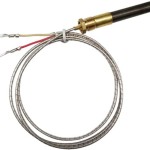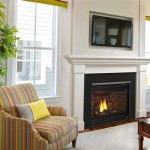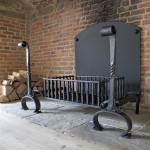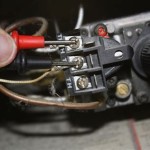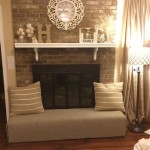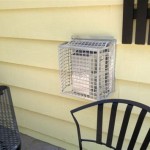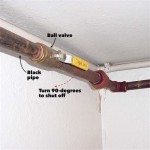How To Mount A Flat Screen TV On A Stone Fireplace
Mounting a flat-screen TV above a stone fireplace can dramatically enhance a living space, creating a focal point that combines entertainment and ambiance. However, this project presents unique challenges compared to mounting on traditional drywall. Stone fireplaces vary significantly in composition, structural integrity, and aesthetic design, necessitating careful planning and execution. This article provides a comprehensive guide to safely and effectively mounting a flat-screen TV on a stone fireplace, covering essential considerations, necessary tools, and step-by-step instructions.
Assessing the Stone Fireplace
Before commencing any physical work, a thorough assessment of the stone fireplace is essential. Understanding the type of stone, its construction, and existing structural elements will determine the most appropriate mounting strategy. Different types of stone, such as natural stone, cultured stone, or brick veneer, possess varying load-bearing capacities. Natural stone, being the most substantial, generally offers the most reliable anchor points. Cultured stone, a manufactured product, may be thinner and less dense, requiring more cautious handling and potentially specialized mounting hardware. Brick veneer, similarly, often lacks significant structural depth and may only be suitable for lighter TVs.
The fireplace's construction method also impacts the mounting process. A solid stone fireplace, built directly onto the foundation, provides a much more stable base than a facade attached to a wooden frame. If the fireplace is a facade, it is crucial to locate the underlying framing studs to secure the mounting bracket properly. This may involve carefully removing small sections of stone to expose the studs, which will later need to be patched and concealed.
Finally, inspect the existing structural elements, such as a mantel or architectural features, that might interfere with the TV or mounting bracket. Determine if these elements can be safely removed or if the mounting strategy needs to be adjusted to accommodate them. Take precise measurements of the fireplace's dimensions, including the height, width, and depth, to ensure the TV is centered and positioned at a comfortable viewing angle. Note any irregularities or uneven surfaces that might require shimming or leveling during the mounting process.
Selecting the Appropriate Mounting Hardware and Tools
Choosing the correct mounting hardware and tools is paramount for a secure and aesthetically pleasing installation. The selected hardware must be compatible with both the TV's VESA (Video Electronics Standards Association) mounting pattern and the specific type of stone fireplace. The TV's weight and size are critical factors in determining the required load-bearing capacity of the mounting bracket. Always select a bracket rated to hold significantly more weight than the TV itself to provide a safety margin.
There are various types of TV mounting brackets available, including fixed, tilting, and full-motion brackets. A fixed bracket provides the most stable and low-profile installation, ideal for situations where viewing angles are consistent. A tilting bracket allows for slight vertical adjustment, useful for reducing glare or optimizing viewing from different seating positions. A full-motion bracket offers the greatest flexibility, enabling the TV to be swiveled and extended for optimal viewing from various locations within the room. The choice depends on individual preferences and viewing requirements.
For securing the mounting bracket to the stone fireplace, specialized anchors are essential. Standard drywall anchors are inadequate for stone. Options include masonry anchors, sleeve anchors, and expansion bolts. Masonry anchors are suitable for lighter applications and softer stone. Sleeve anchors provide a more robust hold and are ideal for denser stone or heavier TVs. Expansion bolts offer the highest load-bearing capacity and are recommended for the most demanding installations. The specific type of anchor should be selected based on the stone's density and the TV's weight, consulting with a hardware professional is recommended.
In addition to the mounting bracket and anchors, a range of tools is necessary. A hammer drill with masonry drill bits of appropriate sizes is crucial for creating pilot holes in the stone. A level ensures the bracket is mounted perfectly horizontally. A stud finder helps locate framing studs behind a facade. A tape measure and pencil are used for accurate measurements and marking. Safety glasses and gloves protect against debris and sharp edges. Cable management solutions, such as cable ties or conduit, help conceal and organize the TV's power and signal cables, maintaining a clean and professional appearance.
Step-by-Step Mounting Procedure
Once the assessment is complete and the appropriate hardware and tools are gathered, the mounting procedure can commence. It is crucial to adhere to safety precautions throughout the process, including wearing safety glasses and gloves and following the TV and mounting bracket manufacturer's instructions.
Step 1: Marking the Mounting Location: Determine the desired location for the TV on the stone fireplace. Use a level and tape measure to mark the exact position for the top of the mounting bracket. Ensure the TV will be centered horizontally and positioned at a comfortable viewing height. Consider the height of the mantel or any other obstructions that might affect the TV's placement.
Step 2: Drilling Pilot Holes: Using the hammer drill and masonry drill bit, carefully drill pilot holes through the stone at the marked locations. The drill bit's size should match the diameter of the selected anchors. Apply consistent, moderate pressure while drilling, avoiding excessive force that could crack or damage the stone. For softer stone, a standard drill might suffice. Ensure the holes are deep enough to accommodate the full length of the anchors.
Step 3: Installing Anchors: Insert the chosen anchors into the pilot holes. Depending on the anchor type, this may involve tapping them into place with a hammer or tightening them with a wrench. Follow the manufacturer's instructions for proper anchor installation. Ensure the anchors are securely seated and flush with the stone surface.
Step 4: Attaching the Mounting Bracket: Align the mounting bracket with the installed anchors and secure it using the appropriate bolts or screws. Tighten the fasteners firmly, ensuring the bracket is level and stable. Double-check the bracket's alignment with a level before fully tightening the fasteners. If necessary, use shims to compensate for any unevenness in the stone surface.
Step 5: Attaching the TV to the Bracket: Attach the TV mounting arms to the back of the TV, following the TV manufacturer's instructions. Ensure the arms are securely fastened to the TV's VESA mounting pattern. Carefully lift the TV and attach it to the mounting bracket, aligning the mounting arms with the corresponding slots or hooks on the bracket. Secure the TV to the bracket using the provided screws or locking mechanisms.
Step 6: Cable Management: Conceal and organize the TV's power and signal cables using cable ties, cable sleeves, or conduit. Run the cables behind the TV and down the wall, securing them to the back of the fireplace or wall. Consider using a recessed outlet behind the TV to eliminate visible power cords. Route the cables to the appropriate input devices, such as cable boxes, DVD players, or gaming consoles.
Step 7: Final Adjustments: Once the TV is mounted and the cables are managed, make any final adjustments to the TV's position and viewing angle. If using a tilting or full-motion bracket, adjust the angle to optimize viewing from different seating positions. Ensure the TV is securely attached to the bracket and that all cables are properly connected. Power on the TV and test all inputs to verify proper functionality.
Addressing Common Challenges
Mounting a flat-screen TV on a stone fireplace can present several challenges that require careful attention and creative solutions. One common issue is uneven stone surfaces, which can make it difficult to mount the bracket perfectly level. Shims can be used to compensate for minor irregularities, but more significant unevenness may require professional stone leveling.
Another challenge is drilling through particularly hard or brittle stone. Using a high-quality hammer drill with diamond-tipped masonry drill bits is essential for these situations. Apply consistent, moderate pressure and avoid overheating the drill bit. If the stone is prone to cracking, consider drilling pilot holes of progressively larger sizes to minimize stress.
Cable management can also be challenging, particularly with older fireplaces that lack built-in cable pathways. Surface-mounted cable raceways or conduit can be used to conceal cables, but these solutions may detract from the fireplace's aesthetic appeal. A more discreet option is to run the cables through the wall behind the fireplace, but this requires careful planning and execution to avoid damaging existing wiring or plumbing.
Finally, the weight of the TV can be a concern, especially for larger models or fireplaces with weaker stone. It is crucial to select a mounting bracket and anchors with a sufficient load-bearing capacity and to distribute the TV's weight evenly across the mounting points. If in doubt, consult with a structural engineer or experienced contractor to ensure the fireplace can safely support the TV.

Made How To Mount A Flat Screen Tv On Stone Fireplace Diy Wall Mounted

How To Mount Tv Into Stone Above Fireplace Ft Collins Co

How To Mount Tv On Stone Fireplace Installation Guide

Mounting A Tv Above Fireplace With Full Tutorial Fixthisbuildthat

Installing A Tv Wall Mount On Stone Fireplace Lhp

Can I Mount My Tv Above The Fireplace

Mounting A Tv Above Fireplace With Full Tutorial Fixthisbuildthat

Natural Stone Fireplaces With Wall Mount Television Design Ideas

The Mochinist Mounting A Tv Onto An Uneven Surface Stone Above Fireplace Mount Over

Natural Stone Fireplaces With Wall Mount Television Design Ideas

